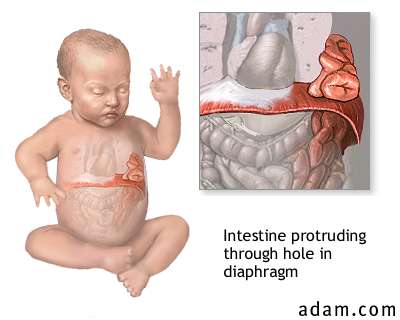|
|
|
Indications
|

|
|

|
|

|
When the diaphragm develops with a hole in it, the abdominal organs can pass into the chest cavity. The lung tissue on the affected side is compressed, fails to grow normally, and is unable to expand after birth. As the baby begins to breathe, cry, and swallow, air enters the intestines that are protruding into his chest. The increasing size of the baby's intestines puts pressure on the other side of his chest, lung, and heart, and can quickly cause a life-threatening situation.
Diaphragmatic hernias are diagnosed by: - chest X-rays
- prenatal ultrasound
- noticeable breathing difficulty (respiratory distress) shortly after the baby's birth
|
|

|
The information provided herein should not be used for diagnosis or treatment of any medical condition. A licensed physician should be consulted for diagnosis and treatment of any and all medical conditions. Copyright 2000 adam.com, Inc. Any duplication or distribution of the information contained herein is strictly prohibited.
|
|